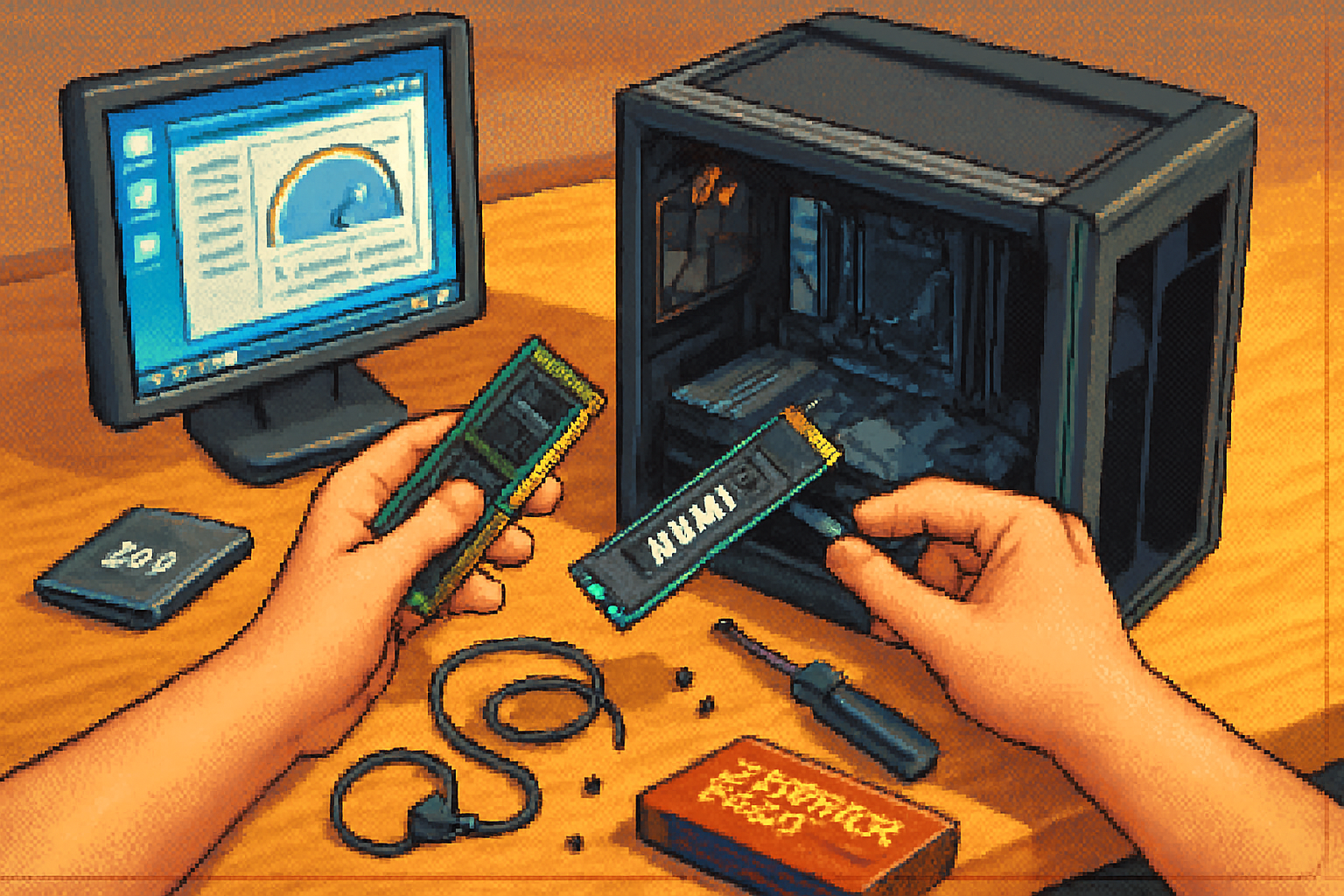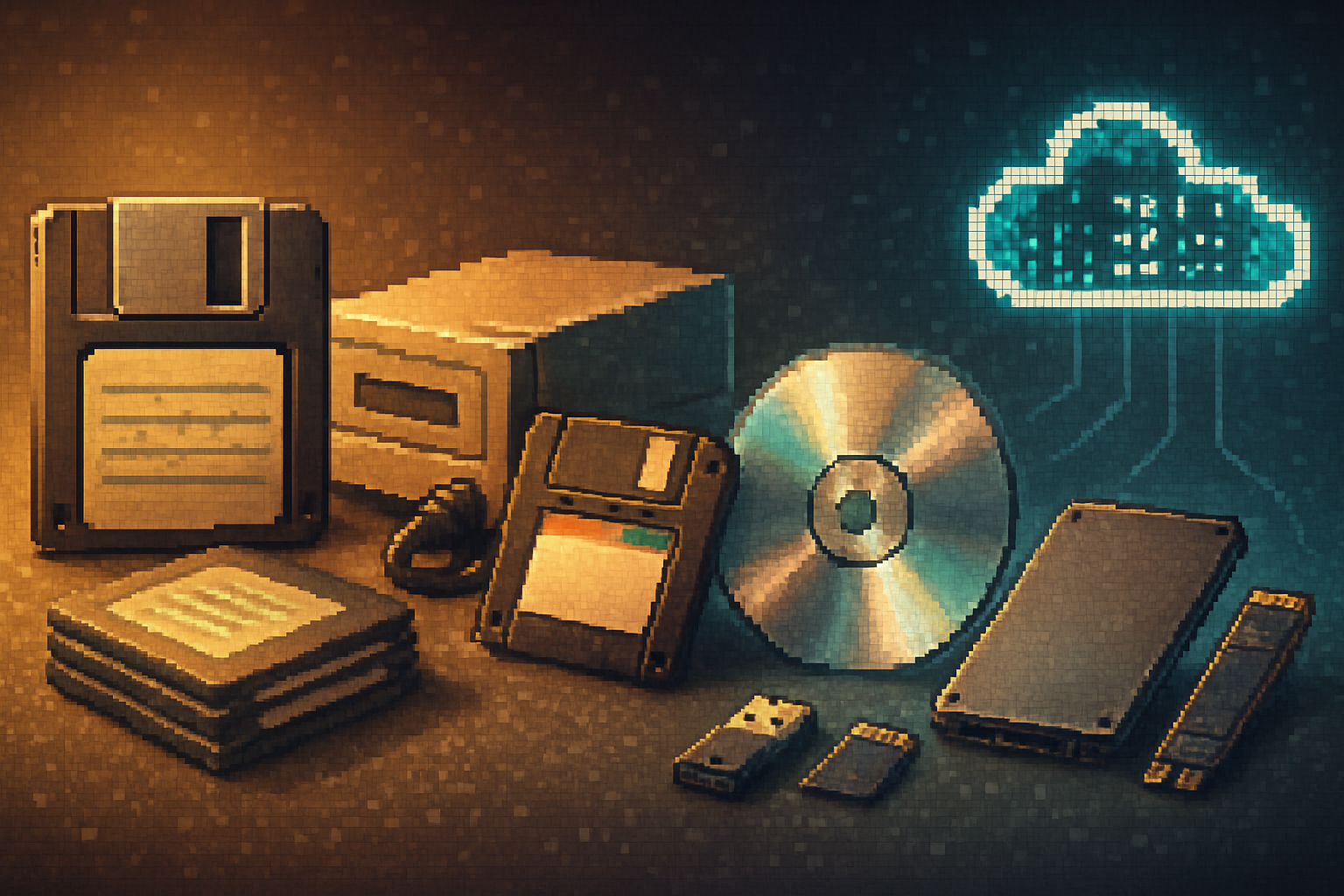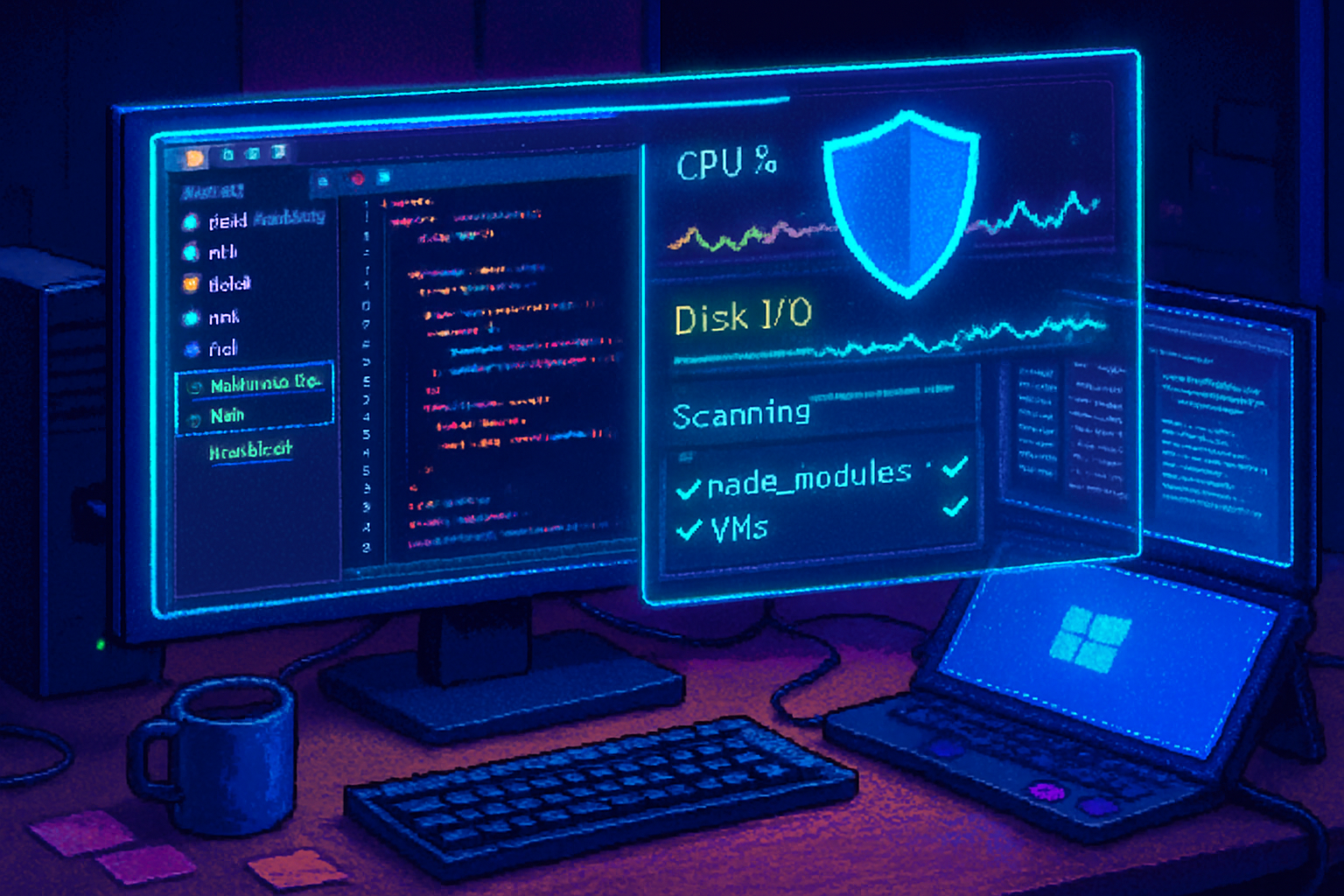· 7 min read
Hardware Upgrades That Can Instantly Revitalize Your Windows PC
A practical guide to the hardware upgrades that deliver the biggest, most noticeable performance improvements for Windows PCs - when to replace your HDD with an SSD or NVMe, how much RAM matters, when a GPU or CPU upgrade is worth it, and step‑by‑step compatibility and installation advice.

Introduction
Is your Windows PC feeling slow, laggy, or just not keeping up with your workflow or games? Before buying a new machine, a handful of targeted hardware upgrades can deliver dramatic, immediate improvements. This guide walks through the upgrades that make the biggest difference, how much speed gain you can realistically expect, compatibility checks, and practical installation tips.
Why hardware upgrades matter (short primer)
- Storage - Moving from a mechanical hard drive (HDD) to a solid‑state drive (SSD) - especially an NVMe SSD - is often the single biggest responsiveness upgrade for everyday use (boot times, app launches, file operations).
- Memory (RAM) - Insufficient RAM causes swapping/paging to disk, which kills responsiveness. Increasing RAM or enabling dual‑channel mode reduces stuttering and improves multi‑tasking.
- Graphics card (GPU) - For gaming, hardware-accelerated apps, and GPU compute tasks, a stronger GPU raises frame rates and reduces render times.
- CPU - Upgrading the CPU helps heavy compute, compilation, virtualization, and some games - but compatibility and platform costs can make CPU upgrades more complex.
Key upgrades that deliver the most immediate impact
- Replace HDD with an SSD (or add an NVMe drive)
Why it helps:
- SSDs have much higher random I/O and lower latency than HDDs. Everyday tasks feel snappier - boot times drop from minutes to seconds, apps open instantly, and file operations are far faster. What to pick:
- SATA SSD - Great budget option; up to ~500–600 MB/s sequential throughput.
- NVMe (PCIe) SSD: Faster (often 1,500–7,000+ MB/s) and lower latency. Best for heavy file transfers, content creation, and fast project loads. Estimated improvement:
- Boot and app launch times: often 3–10x faster than HDD. Random I/O tasks see the biggest gains. Notes and resources:
- Windows and SSDs: Microsoft SSD guidance
- Benchmarks and reviews: PCMag SSD picks
- Add more RAM or upgrade to faster RAM (and enable dual‑channel/XMP)
Why it helps:
- RAM prevents Windows from paging to disk. If your system frequently uses >80% RAM while working, you’ll benefit from a RAM upgrade. What to pick:
- Capacity first - For general use 8–16 GB is typical; gamers and power users should consider 16–32+ GB. Content creators and VM users may need 64 GB or more.
- Speed and timings matter less than capacity for many users; for gaming and some creative workloads, faster RAM can add a few percent.
- Dual‑channel: Use matched sticks in the correct slots to enable dual‑channel memory for measurable bandwidth improvements. Estimated improvement:
- Multitasking responsiveness and fewer stutters; heavy workflows may see 20–100% throughput improvements (depending on the bottleneck). Notes and resources:
- How to upgrade RAM: Crucial RAM guide
- RAM testing tools - Windows Resource Monitor and third‑party tools such as HWiNFO.
- Upgrade the GPU (for gaming, video work, GPU compute)
Why it helps:
- Higher frame rates, better graphics quality, and faster GPU‑accelerated exports or rendering. What to pick:
- Consider your monitor resolution and target FPS (1080p 60+ vs. 1440p vs. 4K). Don’t overspend for a GPU far beyond your display or CPU. Estimated improvement:
- Dramatic in GPU‑bound scenarios - e.g., moving from a decade‑old GPU to a modern midrange GPU can yield 3–5x higher frame rates. Notes and resources:
- Benchmarks and reviews: 3DMark by UL
- CPU upgrade - When it’s worth it
Why it helps:
- Improves single‑threaded tasks (some games), multi‑threaded workloads (compilation, rendering), and responsiveness under heavy load. When to consider:
- If your CPU utilization is consistently high during tasks you care about and you can upgrade the CPU without changing the motherboard, it’s often worth it. Caveat:
- Desktop CPU upgrades can require a new motherboard and sometimes new RAM, increasing cost.
- Power supply (PSU), cooling, and thermal management
Why it helps:
- A weak PSU can limit upgrade options and cause instability. Poor cooling leads to thermal throttling, reducing sustained performance. What to pick:
- Choose a reputable PSU with sufficient wattage and an 80 PLUS rating.
- Improve case airflow and use a better CPU cooler if temps are high.
How to decide which upgrade first (decision matrix)
- General snappiness (web browsing, startup, office apps) - SSD first, then RAM.
- Multitasking, many browser tabs, VMs - Add RAM (or faster RAM plus SSD if still on HDD).
- Gaming at higher FPS or resolutions - GPU first, then CPU/RAM as needed.
- Video editing and content creation - NVMe SSD + more RAM + GPU (if GPU‑accelerated apps are used), then CPU.
- System instability or shuts down under load - Check PSU and temps before spending on CPU/GPU.
Compatibility checklist (before buying)
- Form factor and connectors - 2.5” SATA vs M.2 NVMe vs PCIe x4.
- Motherboard socket and BIOS support (for CPUs and some NVMe/BIOS features).
- Physical clearance for long GPUs inside your case.
- Power connectors and PSU wattage for GPU.
- RAM type and max supported capacity/speed (DDR4 vs DDR5). Useful commands/tools to inspect your current system:
- Device info GUI - msinfo32 (Start → Run → msinfo32)
- Quick PowerShell commands:
# Check physical disks
Get-PhysicalDisk | Format-Table FriendlyName, MediaType, Size
# Check memory
Get-CimInstance -ClassName Win32_PhysicalMemory | Format-Table Manufacturer, Capacity, Speed, DeviceLocator
# Check CPU
Get-CimInstance -ClassName Win32_Processor | Format-Table Name, NumberOfCores, MaxClockSpeedBenchmarks and diagnostic tools
- Disk speed: CrystalDiskMark
- CPU: Cinebench
- GPU: 3DMark or in‑game benchmarks
- System health: HWiNFO or HWMonitor
Step‑by‑step: Upgrading to an SSD (practical flow)
- Backup - Image your current system (Macrium Reflect or Windows backup) - always backup important files.
- Macrium Reflect Free: https://www.macrium.com/reflectfree
- Choose the SSD - SATA for budget; NVMe M.2 for best performance.
- Clone vs clean install:
- Cloning - Faster and preserves settings; use Samsung Data Migration for Samsung drives or Macrium Reflect for others.
- Clean install - Best performance and fewer legacy issues. Requires reinstalling apps and settings.
- Physical install - Mount the drive (M.2 slot or 2.5” bay), connect cables if needed.
- BIOS/UEFI - Ensure the new drive is recognized, enable AHCI for SATA SSDs, and ensure NVMe support is enabled.
- Post‑install - For SSDs, ensure TRIM is enabled - Windows typically does this automatically. See Microsoft docs for TRIM behavior:
Step‑by‑step: Upgrading RAM
- Check motherboard max capacity, supported speeds, and recommended slot population.
- Buy matched modules (for dual/triple/quad channel) where feasible.
- Power down, disconnect power, ground yourself, install sticks in correct slots.
- Boot and check BIOS/UEFI to confirm the full capacity is detected and enable XMP/DOCP if you want the advertised memory speed (optional).
Post‑upgrade tweaks (Windows settings and drivers)
- Update drivers - GPU drivers from NVIDIA/AMD, storage drivers from vendor, chipset drivers from motherboard maker.
- Enable TRIM for SSDs and confirm defragmentation/optimization settings in Windows’ Optimize Drives.
- For RAM - enable XMP (named DOCP on some AMD boards) if you want the RAM to run at rated speeds.
Common pitfalls and how to avoid them
- Compatibility mismatch (e.g., DDR5 RAM in a DDR4 board) - Double‑check specs.
- Cloning onto a smaller drive without shrinking partitions properly - Ensure target has enough space or perform a clean install.
- Thermal throttling after GPU or CPU upgrade - Improve cooling and ensure proper fan curves.
- PSU under‑sizing - Check peak/idle loads before buying a powerful GPU.
Realistic expectations and benchmarks
- HDD → SATA SSD - Boot times drop dramatically (minutes → 10–30s), random I/O tasks 5–10x faster.
- SATA SSD → NVMe - Moderate to large gains in sequential throughput; noticeable in large file transfers and heavy I/O workloads.
- Adding RAM (8→16 GB) - Fewer page faults and smoother multitasking; perceived performance boost depends on previous memory pressure.
- GPU upgrades - From old integrated graphics or a low‑end GPU to modern midrange will often multiply FPS several times at high settings.
Cost vs benefit (quick guide)
- Highest bang for buck for most users - SSD first, then RAM.
- Gamers - GPU is priority if CPU isn’t the bottleneck.
- Professionals who edit/video encode - NVMe + more RAM + GPU (if app uses GPU acceleration).
Safety and best practices
- Always back up before making major changes.
- Unplug power and ground yourself when working inside a PC.
- Update BIOS only if necessary and follow motherboard vendor instructions.
Resources and further reading
- Microsoft SSD guidance: https://learn.microsoft.com/windows-hardware/design/device-experiences/solid-state-drive-overview
- Crucial memory upgrade guide: https://www.crucial.com/articles/about-memory/how-to-upgrade-ram
- CrystalDiskMark: https://crystalmark.info/en/software/crystaldiskmark/
- Macrium Reflect (disk imaging/cloning): https://www.macrium.com/reflectfree
- 3DMark benchmarks: https://www.ul.com/benchmarks/3dmark
Conclusion
A few well‑chosen hardware upgrades can breathe new life into an older Windows PC. For most users, replacing an HDD with an SSD (or NVMe) delivers the most immediate and noticeable improvement. If you multitask heavily, 부족한 RAM is the next thing to address. Gamers and GPU‑heavy creators should target the graphics card (and ensure the CPU, PSU, and cooling are adequate). Finally, plan purchases around compatibility, back up data, and use the recommended tools to measure before and after performance so you can see the gains for yourself.

